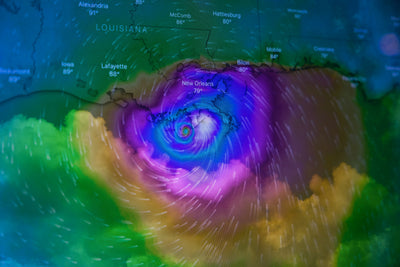Introduction
From “rabbits with tentacles” making waves on Google Trends to social media posts of “horned rabbits,” “Frankenstein bunnies,” “demon rabbits,” and “zombie rabbits,” strange-looking lagomorphs are dominating online conversations. While they appear bizarre and almost fictional, these images often have real biological explanations. Many are linked to Shope papilloma virus, also known as rabbit papillomavirus, which can cause horn-like or unusual growths on rabbits—likely inspiring the legendary jackalope.

For dog owners, these odd rabbit conditions may spark a related worry: what about warts in dogs? Medically called canine papillomas, dog warts are caused by the canine papilloma virus. Pet parents often ask: “Can dogs get warts?” “Can dog warts turn into cancer?” and “Can warts from dogs spread to other pets?”

Before you search for home remedies or worry about warts from dogs, it’s important to speak with a veterinarian for guidance. In this article, our experts explain the link between papillomavirus in dogs, how canine papilloma spreads, and what steps you can take to keep your dog healthy.
Dog Warts (Canine Papillomas) Complete Guide: Causes, Signs, Diagnosis, Treatment, Recovery & Prevention
Dog warts, also known as canine papillomas, are a common skin issue in dogs that can worry pet parents. These growths are caused by the canine papilloma virus and often appear as small, cauliflower-like bumps on the mouth, lips, eyelids, or paws. While most cases are harmless, many owners ask: “Can dogs get warts?” and even more importantly, “Can dog warts turn into cancer?”
This comprehensive guide covers everything you need to know about dog warts—from causes and signs to diagnosis, treatment, recovery, and prevention.
Causes of Dog Warts (Canine Papillomas)
Dog warts are caused by the canine papilloma virus (CPV), which spreads between dogs through direct contact or contaminated objects like toys, bowls, or bedding.
Dogs of all ages can develop warts, but puppies and senior dogs are at higher risk due to weaker immune systems. Risk factors include:
- Direct contact with infected dogs
- Sharing contaminated items (toys, bowls, bedding)
- Weak immune system (in young, elderly, or sick dogs)
- Stress or illness that lowers immune defenses
- High exposure in places like kennels, dog parks, or shelters
Signs of Dog Warts
Recognizing the symptoms early can help ensure timely care. Common signs of dog warts include:
- Small, raised, or cauliflower-shaped bumps on lips, gums, eyelids, or paws
- Clusters of warts around the mouth or face
- Pain or bleeding if the dog scratches or chews the wart
- Difficulty eating or chewing when warts grow inside the mouth
- Irritation or limping if warts appear between paw pads
- Secondary infections from licking or scratching
While most warts remain benign, sudden changes in size, shape, or color should be evaluated by a vet.
How Veterinarians Diagnose Dog Warts
If you notice unusual growths, your vet will begin with a physical exam and medical history. Since warts from dogs can resemble other skin issues, further tests may be needed, including:
- Visual inspection of the bumps for the classic papilloma appearance
- Biopsy or fine-needle aspiration to confirm if the growth is a benign wart
- Histopathology (microscopic exam) to rule out tumors or abnormal cells
- Blood work to check your dog’s immune health
Many pet parents worry, “Can dog warts turn into cancer?” While rare, vets may recommend a biopsy for persistent or unusual growths to rule out malignant changes.
Treatment for Dog Warts
How to treat dog warts? In most cases, treatment is not required—canine papillomas often resolve naturally within 1–3 months. However, if warts cause discomfort, spread rapidly, or interfere with eating, walking, or vision, treatment may be necessary.
Veterinary treatment options include:
- Surgical removal of large or bothersome warts
- Cryotherapy (freezing) to eliminate growths
- Laser therapy for persistent papillomas
- Antiviral or immune-boosting medications in select cases
At-home care includes preventing your dog from licking or scratching warts and maintaining good hygiene of toys and bedding. Always consult your vet before attempting any home remedies.
Recovery and Management of Dog Warts
Recovery time depends on your dog’s immune system. Most dog warts disappear without complications, but puppies and older dogs may need longer. During recovery:
- Stop your dog from chewing or scratching warts
- Clean and disinfect shared items to reduce spread
- Limit close contact with other dogs (since warts from dogs are contagious)
- Provide a balanced diet and regular exercise to strengthen immunity
Although canine papillomas are usually benign, any persistent or abnormal growth should be checked to rule out rare cancerous transformation.
Prevention of Dog Warts
While you cannot completely prevent canine papillomas, you can lower your dog’s risk:
- Avoid sharing toys, bowls, or bedding with unfamiliar dogs
- Practice good hygiene by regularly cleaning your dog’s belongings
- Limit exposure in high-risk environments like kennels or shelters
- Support your dog’s immune system with proper nutrition, rest, and routine veterinary checkups
A common concern is, “Are dog warts contagious?” Yes, they can spread between dogs, but they are not contagious to humans or cats.
Final Thoughts
Dog warts are a common and usually harmless condition caused by the canine papilloma virus. Most will resolve on their own, but monitoring is important. If you notice sudden changes in a wart’s size, shape, or color, consult your veterinarian immediately.
By understanding the causes, signs, diagnosis, treatment, recovery, and prevention of dog warts, you can keep your pet healthy and minimize the risks associated with canine papillomas.

Noora Daily Multi with 21 Beneficial Nutrients
Dog Warts FAQs
Can dogs get warts?
Yes. Dog warts, also called canine papillomas, are caused by the canine papilloma virus. They usually appear as small, cauliflower-like growths on the mouth, lips, eyelids, or paws.
Are dog warts contagious?
Yes. Warts from dogs can spread to other dogs through direct contact or shared items like toys, bowls, and bedding. However, they cannot spread to humans or other pets such as cats.
How long do dog warts last?
In most healthy dogs, warts resolve on their own within 1–3 months as the immune system fights off the virus. Puppies and senior dogs, who have weaker immune systems, may take longer to recover.
How can I treat my dog’s warts?
Many warts don’t need treatment and will disappear naturally. If the warts cause pain, interfere with eating or walking, or become infected, a veterinarian may recommend removal through surgery, cryotherapy (freezing), or laser treatment. Always consult your vet before attempting treatment at home.
Can dog warts turn into cancer?
In the majority of cases, canine papillomas remain benign and harmless. Rarely, persistent or abnormal warts may transform into malignant tumors. For this reason, any wart that changes in size, color, or shape should be examined by a veterinarian.
References
1.VCA Animal Hospitals. (n.d.). Papilloma of the skin in dogs. Retrieved from https://vcahospitals.com/know-your-pet/papilloma-of-the-skin
2.West Coast Veterinary Dental Services. (n.d.). Oral papillomas in dogs. Retrieved from https://www.vet.bc.ca/oral-papillomas.pml
3.Pawlicy Advisor. (2023). Oral papilloma virus in dogs: Symptoms, treatment & prevention. Retrieved from https://www.pawlicy.com/blog/oral-papilloma-virus-in-dogs
4.Lange, C. E., Tobler, K., & Ackermann, M. (2011). The variability of canine papillomaviruses. The Veterinary Clinics of North America: Small Animal Practice, 41(6), 1041–1058. doi:10.1016/j.cvsm.2011.08.005
5.Tislerics, A., & Callan, M. B. (2017). Canine papillomavirus infections. Clinical Veterinary Advisor. Retrieved from https://www.sciencedirect.com/science/article/abs/pii/S1090023317300965
6.Mao, C., et al. (2025). Genomic and epidemiological insights into canine papillomavirus. Virology Journal, 22(15), 1–12. doi:10.1186/s12985-025-02753-3
7.Frontiers in Veterinary Science. (2023). Canine papillomavirus: Natural course and malignant potential. Frontiers in Veterinary Science, 10, 1174673. doi:10.3389/fvets.2023.1174673
8.Pet Cancer Foundation. (2023). What treatments are available for canine papillomavirus? Retrieved from https://petcancerfdn.org/pet-health/canine-viruses-and-infections/what-treatments-are-available-for-cpv





